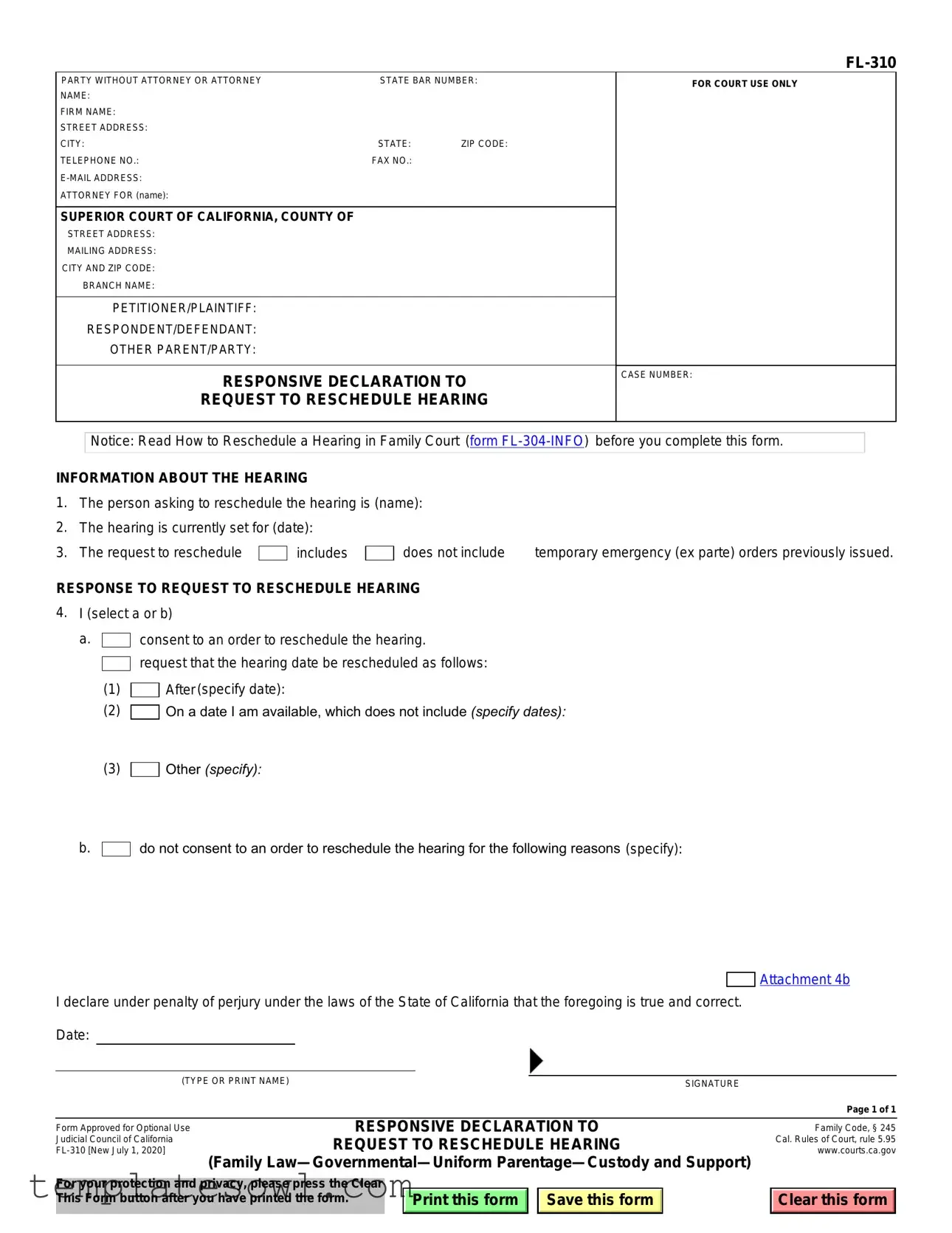Filling out the FL-310 form can be a straightforward task, but many individuals make common mistakes that can lead to complications in their hearings. One frequent error is overlooking the necessity of designating the party requesting the change. The form asks for the name of the person requesting to reschedule the hearing, yet some forget to include this critical information. Without this detail, the court may struggle to identify who is making the request, and it could delay proceedings.
Another common mistake involves the date of the current hearing. It’s essential to accurately state the scheduled hearing date. Some individuals misinterpret this as merely indicating a date for when they want to reschedule, leading to confusion and a potentially rejected form. It is important to remember that clarity is key. If the original date isn’t explicitly outlined, the court might assume the request is lacking completeness.
People sometimes fail to check the appropriate box regarding their consent to reschedule. This section gives two options: consenting or providing reasons for non-consent. In cases where the box is left unchecked, it creates uncertainty about the requester’s intentions, which can hinder the rescheduling process. Ensuring that one of the options is clearly marked can prevent this issue.
Additionally, many overlook the importance of specifying alternative dates. If a person wishes to propose a specific timeframe for the new hearing, they need to fill in the section thoughtfully. Without providing feasible dates, the request may be seen as vague, making it harder for the court to accommodate the request.
Providing the wrong contact information is another error that people often make. This includes failing to list a current phone number or email address. Should the court need to reach out for clarification, having up-to-date contact details is vital. Outdated or incorrect information could mean missing crucial communication about the rescheduling.
Another misstep occurs when individuals neglect the requirement to sign the form. While it may seem simple, forgetting to sign can cause delays. The court requires signatures as verification of the information provided. Without a signature, the form may be treated as incomplete.
Misunderstanding the section concerning emergency orders (ex parte) can also create problems. If temporary emergency orders were issued before the hearing, indicating whether these orders were or were not included in the request is crucial. Failing to clarify this can lead to administrative issues that complicate the rescheduling.
Some people provide insufficient reasons if they choose not to consent to a reschedule. This section allows individuals to express their concerns adequately. However, vague or general statements do little to persuade a judge and can ultimately weaken one’s position. Clear articulation of specific reasons can affect the outcome significantly.
Finally, neglecting to follow the guidelines outlined in the accompanying informational materials is a common pitfall. The notice clearly states that individuals should read the instructions before completing the form. Ignoring these directions can lead to mistakes, resulting in unnecessary delays in the case.


 consent to an order to reschedule the hearing
consent to an order to reschedule the hearing request that the hearing date be rescheduled as follows:
request that the hearing date be rescheduled as follows:


 On a date I am available, which does not include
On a date I am available, which does not include